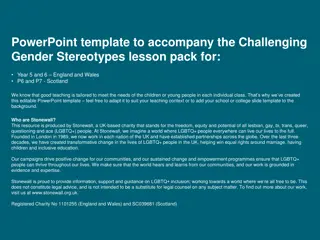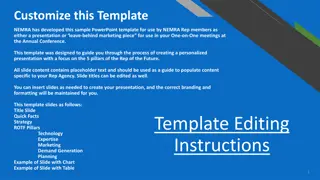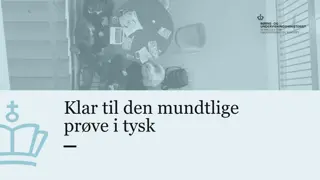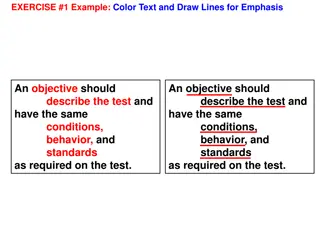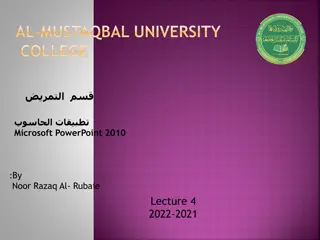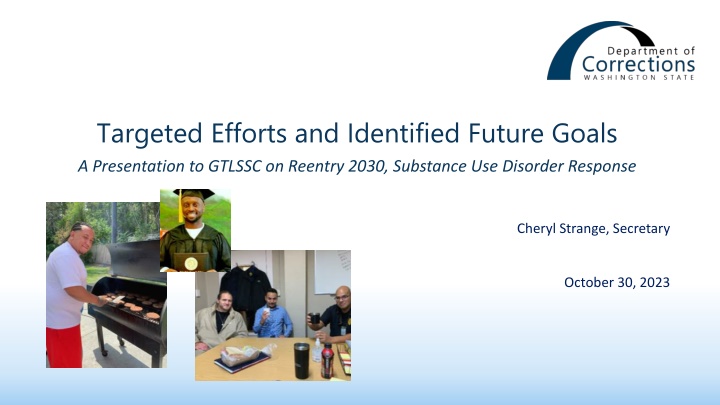
Future Goals for Substance Use Disorder Response in Reentry Programs
Discover the strategic initiatives presented by Cheryl Strange on reentry programs and substance use disorder responses. Efforts include enhancing access to treatment, increasing job opportunities, and fostering community support for reentering individuals. Partnerships with various state boards, councils, federal agencies, and non-profit organizations are highlighted for a holistic approach. Additional details cover the targeted funding for substance use disorder redesign, focusing on MOUD medications and support services through 2027.
Download Presentation

Please find below an Image/Link to download the presentation.
The content on the website is provided AS IS for your information and personal use only. It may not be sold, licensed, or shared on other websites without obtaining consent from the author. If you encounter any issues during the download, it is possible that the publisher has removed the file from their server.
You are allowed to download the files provided on this website for personal or commercial use, subject to the condition that they are used lawfully. All files are the property of their respective owners.
The content on the website is provided AS IS for your information and personal use only. It may not be sold, licensed, or shared on other websites without obtaining consent from the author.
E N D
Presentation Transcript
Targeted Efforts and Identified Future Goals A Presentation to GTLSSC on Reentry 2030, Substance Use Disorder Response Cheryl Strange, Secretary October 30, 2023
DOC represented at the Health Services Sub-Cabinet Third in the Nation to sign onto Reentry 2030 Support and funding for other agencies to prioritize those reentering HCA 1115 Waiver access to Medicaid prior to release Governor s Call to Action Reentry 2030 Create immediate access to substance abuse and MH treatment in the community Increase affordable housing Increase jobs for formerly incarcerated and increase job readiness
Reentry Partnerships are Critical State Boards & Councils Community Partnerships State Agencies Separately Elected Federal Partners Dept of Children, Youth, & Families Dept of Commerce Dept of Ecology Dept of Health Labor & Industries Dept of Licensing Dept of Social & Health Services Dept of Transportation Employment Security Dept Health Care Authority WA Dept of Veterans Affairs Washington Student Achievement Council (WSAC) CI Advisory Committee Aerospace Joint Apprenticeship Committee (AJAC) Social Security Administration Secretary of State Tribal Governments Indeterminate Sentence Review Board U.S. Department of Veterans Affairs Community Colleges & Four-Year Universities Department of Natural Resources State Board of Technical & Community Colleges Statewide Family Council Non-profit Partnerships Labor Unions Statewide Reentry Council
Substance Use Disorder Redesign 2024 Supplemental Request $8.5 Million for Medications for Opioid Use Disorders (MOUD) 1 Lead ASAM certified Addiction Medicine Physician 1 MOUD Treatment Administrator 3 MOUD Coordinators 22 Nurse 2s 1 MOUD Nursing Supervisor 14 Custody Officers to provide supervision while dosing. Sublocade funding for 29 doses (approximately $1,500 per dose) in FY2024 $4.5 Million Total - Reentry Services and Supports Total DP. Includes investments in coordination of transition for those with SUD needs. 8 Recovery Care Navigators 1 SUD Linkage Supervisor
Substance Use Disorder Redesign 2025-2027 Biennium Key Components: Expansion of Patient Centered Medical Home Implementation of the federal 1115 waiver Redesign of Reentry Centers
DOC Fentanyl Task Force CDC reports WA had the highest year-over-year drug overdose death increase in the nation.
DOC Fentanyl Task Force Mission: To design, develop, and implement multi Mission: To design, develop, and implement multi- -disciplinary strategies to combat the introduction and proliferation of fentanyl in the DOC population enterprise wide. introduction and proliferation of fentanyl in the DOC population enterprise wide. disciplinary strategies to combat the Education: Treatment: Enforcement: Training staff and incarcerated individuals about the prevalence and dangers of fentanyl. Provide information about importance of reducing drug use stigma and supporting treatment. Train staff to work safely and confidently in situations where they may encounter suspected fentanyl. Qualified staff support treatment and recovery using substance use treatment based on evidence- based practices. Develop agency initiatives to combat the introduction and use of fentanyl and other synthetic opioids. Collect information to identify vulnerable populations to inform opportunities to intercept illicit controlled substances. Explore options to increase awareness and innovation in our treatment options.

